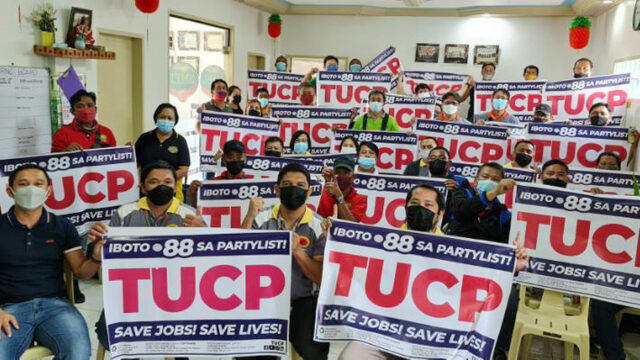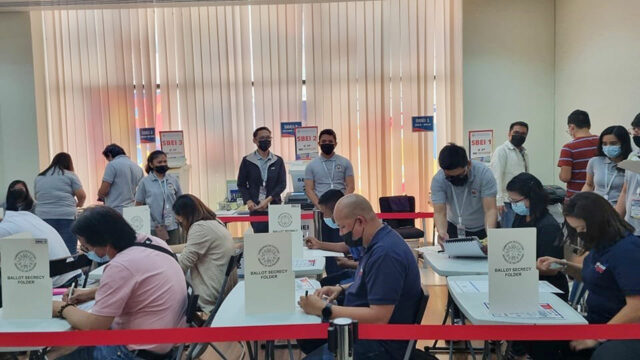By Arjay L. Balinbin, Senior Reporter
AMENDMENTS to the Public Service Act (PSA) were not specifically designed to force small-scale transport operators out of the industry, the author of the amendments said.
Senator Mary Grace Natividad S. Poe-Llamanzares, primary author and sponsor of the measure, said that “framers of the new Public Service Act… did not, in any way, intend to exclude natural persons from operating or managing” PUVs.
In a statement issued to BusinessWorld, Ms. Poe cited legal interpretations that took into account “The spirit rather than the letter of the law.”
“A statute must be read according to its spirit or intent, for what is within the spirit is within the statute although it is not within its letter, and that which is within the letter but not within the spirit is not within the statute,” she said.
Ms. Poe was queried about her views on the amendments in the wake of a newspaper column raising the possibility that operator licensing for public utility vehicles such as jeepneys, UV Express, mini buses, taxis, and tricycles could be closed to individuals.
In an April 26 BusinessWorld column, Mervin Kenneth C. Ignacio, an associate of the Corporate & Special Projects Department of the Angara Abello Concepcion Regala & Cruz Law Offices, said that the amended PSA, or Republic Act No. 11659, which opened some public services to full foreign ownership, also removed any reference to individuals being granted operating licenses.
He noted that under the amended Section 16 of the PSA, “individuals may no longer be granted a franchise for the operation, maintenance, or control” of Public Utility Vehicles (PUVs).
The old provision recognized “citizens of the Philippines” as eligible to hold operating permits for public services, including public utilities.
“A lot of (the) individual franchise holders are either the drivers themselves or operators of only a small number of vehicles. Further, with respect to public utility tricycles, unless they are operated by cooperatives, they are most likely operated by individuals,” Mr. Ignacio said.
He asked whether Congress intended to corporatize the operation, maintenance, and control of all PUVs.
In her statement, Ms. Poe said: “Even from a cursory reading of the law’s provisions, it is evident that certificates can be granted to natural persons, not only juridical persons. For one, measures were taken to protect the local tsuper and manongs, specifically by including PUVs under public utility,” she added.
Under the amended PSA, a service classified as a public utility remains subject to the 60-40 ownership restriction in favor of Filipino nationals.
“Further, the intent to not conflate the liberalization aspect with the franchise requirement is very clear from both the deliberations and the resulting statute,” Ms. Poe said.
“Congress took pains to expressly legislate under RA 11659, Section 4, amending Section 13 of the old PSA that ‘all public services, including those classified as public utilities, shall continue to be regulated and supervised by the relevant administrative agencies under existing laws,’” she added.
She said the PSA and its amendments “never excluded natural persons from the franchise requirement.”
Citing Section 13 of the original PSA, which the amendments do not repeal, she noted that the term “public service” covers “every person that now or hereafter may own, operate, manage, or control…”
“Section 13(c) states that ‘person’ includes ‘… every individual, … and whatever other persons or entities that may own or possess or operate public services,’” Ms. Poe said.
“That natural persons may still be granted franchises is evident in the criteria laid down by Congress under Sec. 13 (e) (1). The person or juridical entity regularly supplies and transmits and distributes to the public through a network a commodity or service of public consequence.”
“When read in conjunction with the amended Section 16(a), the proviso restricting grant of franchises and certificates to operate, manage, or control a public service to corporations organized in the Philippines should be read as a restriction upon grants to juridical persons, and not upon grants to natural persons.”
Asked to comment, Terry L. Ridon, convenor of infrastructure and investment think tank InfraWatchPH, said: “This is cute table-top legal analysis from big law firms, but certainly, the legislature did not intend to cover jeepneys, mini-buses and tricycles within the ambit of amendments of the Public Service Act.”
He said that Congress did not concern itself with putting small transport operators out of work especially during a pandemic.
“Although proponents of jeepney modernization may use this as a basis to remove individual operators from its franchise list, we are looking forward that the executive’s implementing rules will make clarifications on this specific matter,” he added.
Transport expert Rene S. Santiago said in a phone message: “I do not think that exclusion of natural persons was intentional, on the part of the authors of the bill.”
“SMEs (small- and medium-sized enterprises) are the dominant organization form for jeepneys and buses. Notwithstanding the order of DoTr (Department of Transportation) and LTFRB (Land Transportation Franchising and Regulatory Board), under the PUVM (Public Utility Vehicle Modernization Program), to vanish individual ownership,” he added.
“The IRR (implementing rules and regulations), which has not been issued yet, should address the transition and possible confusion or ambiguity.”
At the same time, he noted that the revised Corporation Code now allows for one-person corporations.
Ms. Poe said: “We must always be guided by the intent of Sec. 16(a) which was to ensure that regulatory bodies would be better able to exercise jurisdiction over foreign-owned public services. This is not an issue with Filipino individuals.”
“As a final note, we must also remember that the issue of PUV fleet consolidation or corporatization is entirely separate from the PSA Amendments. This is a PUV Modernization issue for which the Senate Committee on Public Services continues to consult all stakeholders for a winning middle ground.”
She added that the PSA amendments “must be read as a whole and not piecemeal lest we run the risk of conjuring from thin air the problems that the PSA amendments sought to resolve in the first place.”
“The Philippine Senate and Congress passed the new Public Service Act in order to energize our industries. As such, the law should be read and interpreted to fulfill that mandate.”
Mar S. Valbuena, president of the transport group Samahang Manibela Mananakay at Nagkaisang Terminal ng Transportasyon, said in a phone interview that all stakeholders should be consulted before drafting the IRR to clarify these matters.
“Dapat magkaroon ng public consultation, wala munang IRR. Dapat i-clarify. Bago pa magkaroon nyan, ’yung mga stakeholders sana ay na-consult na. ’Yun ang makakabuti, kasi hindi naman sila ang nasa ground,” he said.
“Nagkakaroon lang ng consultations kapag nagra-rally na kami or nagrereklamo na kami.”












